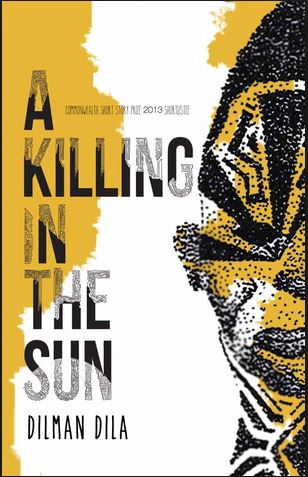
This short story collection by Ugandan writer, Dilman Dila, is sheer entertainment with a thick seam of seriousness. Speculative fiction, in several of its forms, is deployed to shine a refreshing perspective on age-old themes of corruption, power struggles, western exploitation and civil wars in Africa. Aliens, zombies, magical realism and futuristic technologies skitter through the stories, reminding us that despite the trappings, there is nothing new under the sun.
The Leafy Man is eerily topical in a time of Zika fears and conflicting stories of unintended consequences of pesticide use; a whole village is decimated. Only Japia, traditional healer, holds the key and it lies with oranges.
The Healer is a story of two tribes that hate each other based on the usual arbitrary reasons. The Twa were enslaved by the Cuku but only Benge, the healer remained free. He hides himself using magic and the leaders of the Cuku visit him in secret. A boy goes missing and the hunt is on. Benge uses his juju, and with the help of Acii, a young girl who can turn herself into a parrot or a Marabou stork. This story conjures up genocides all over the world with its exploitation of superstitious beliefs and the power struggles between leaders.
Itanda Bridge is the scene of a disaster and the militia turn to Obil, a diver, to help them solve the riddle of how three vehicles had crashed off the bridge and disappeared. He is forced to help knowing he may die in the process. There is poignancy too when he contemplates what clothes to wear when he is plucked from his home. What lies beneath the water is startling.
A Killing in the Sun is the story of a court martial that cannot begin until the doctor arrives. Mande stands in the sun contemplating death though hoping for life as the reasons for his sentence flash through his mind. Civil war, rebel gangs and militia destroyed his life long before this moment arrives and all the while the sun beats down relentlessly.
In The Doctor’s Truck, a ghost occupies Okot’s truck and kills a child. A mob blames the doctor until a mzungu (white person) comes to his rescue and offers the assistance of an exorcist.
Lights on Water, a sad yet touching story in which a father tries to reach out to his daughter. She has been indoctrinated into believing that her skin colour, tawny brown instead of sooty black like everyone else, makes her an outcast. He has access to the natural world in his job as a painter who paints demons at the request of the Emperor and he smuggles her into his spaceship to show her the truth.
A Wife and a Slave reveals more indoctrination, this time an Emperor who wants all Africans to return to ‘what was supposed to be life in Africa before the Europeans came’. Sex was only allowed for procreation and wives had to treat their husbands as lord and master, bowing down before them and obeying their every command, except if they want sex. Any adherence to anything white whether music, books or names is regarded with suspicion, shows the African mind is still enslaved and requires re-education. A fugitive white escapee disrupts everything. Tyranny of one kind simply replaces tyranny of another; leaders have rules based on manipulations and mass brain-washing. 1984 meets Heart of Darkness? this is one of my favourites.
In The Yellow People, meet a serial killer with a difference; Dunningan encounters an old man with no thumbs dressed in a strange yellow costume buying insecticide and he fears he will be found out.Societies with weak law and order and high levels of corruption are a magnet to the evil of this world which is why he lives here.
Okello’s Honeymoon, a tale of two men who fall in love with zombies, thus risking their very existence. This is a warning tale regarding womanly wiles disguised in other-worldly attire.
A Bloodline of Blades – a man’s gift is his music, as an assassin by trade it was the only way to attract a wife and he wanted to pass this gift on to his son. His son is ashamed of this and aspires only to be an assassin and rejects his father’s gift. This story is really about loyalty and family bonds as both father and son secretly try to save each other.
The beauty of these stories is that each in their own way shows a human side, of people who love, hate, fear and yearn. Dila’s wonderful imagination lifts this collection into an alien yet familiar space, where the ‘other’ is lampooned in a fantastical way.
Hello, Penny. I published A Killing in the Sun. I was just trawling the net for reviews on it and landed on this page. Thank you so much for the lovely review, I’ll be sharing it on our pages. I’d like to request your permission to quote the first sentence on the last paragraph on the cover of the reprint. It’ll be a quote with your name and blog name. I look forward to hearing from you. Thank you.
LikeLike
Greetings, I would be honoured to be quoted on the reprint. I would have to buy another copy. Also, can he write some more? Regards Penny
LikeLiked by 1 person
thank you so much, Penny!
LikeLike